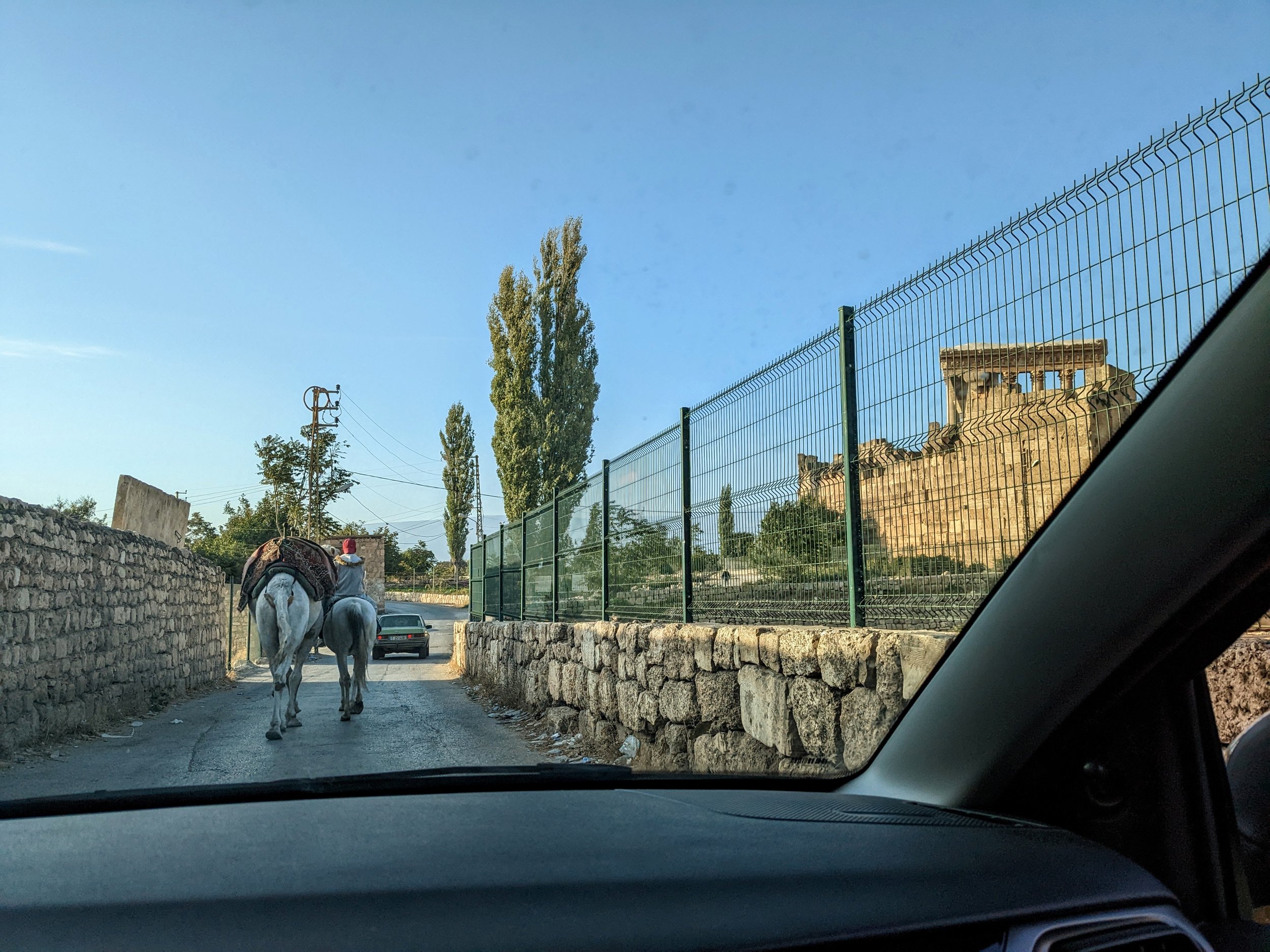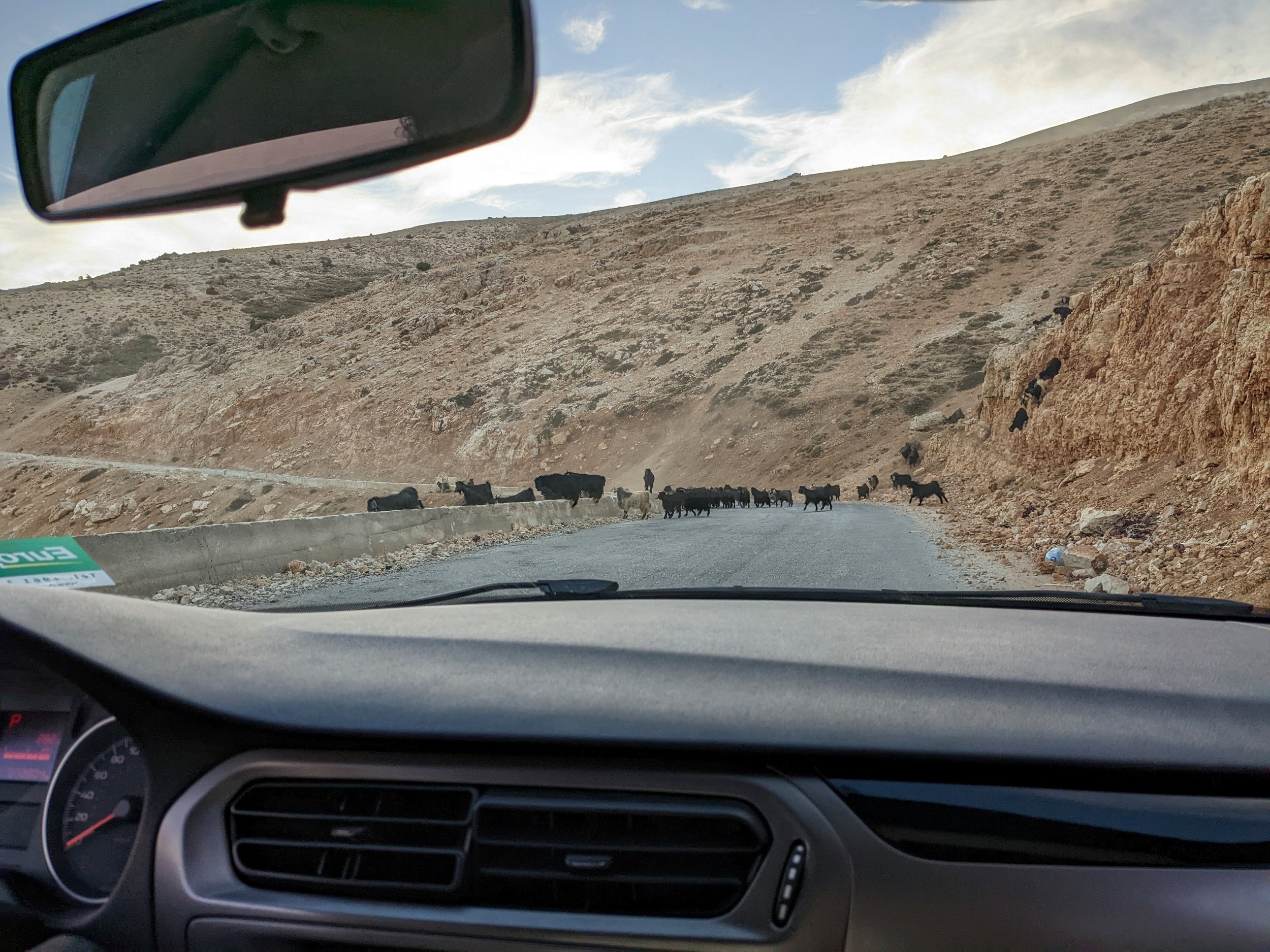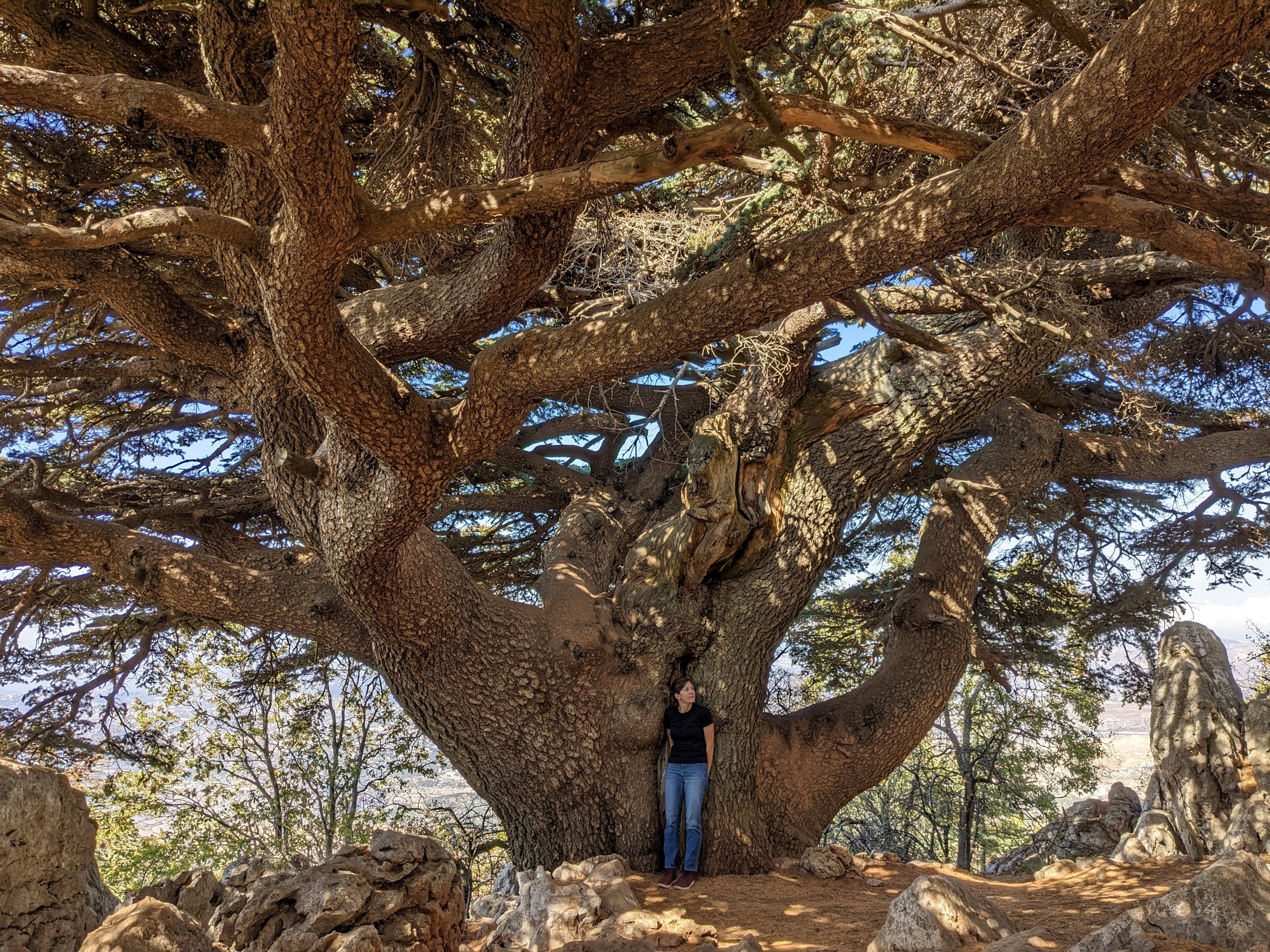lebanese dispatch: the cedars
My dear friend,
We’re on the road this week, and so I’m writing to you from the front seat of a little French rental car while C. navigates the narrow highways, the wild traffic, and the terrifying potholes. I’m supposed to be helping him navigate, a task which I excel at for about eighty percent of the drive. The other twenty percent of the time, I get distracted by the view or the radio or the story I’m telling him. This is unfortunate, because the road is full of unexpected obstacles: sometimes we find ourselves behind a donkey or a camel or both; other times, we have to wait for a herd of goats to cross the highway. We parked in the middle of the road and watched three or four working dogs loop around the group to keep all the goats together.
My point is, I’d best keep this letter short.
You may already know that the cedar tree is a symbol of Lebanon. It’s on the center of the flag; it’s painted on trucks and military checkpoint booths.
You will find it on airplane wings, t-shirts, bumperstickers, corporate logos.
C. even has one tattooed on his forearm as a nod to his Lebanese heritage.
(I was stopped and fingerprinted upon arrival at the Beirut airport, but he wasn’t. Is it possible that they waved him through after seeing the tree?)
It’s no coincidence that our own beloved herding dog is named Cedar!
You may also know a little bit about the cedar tree’s literary history. In the ancient Sumerian Epic of Gilgamesh (considered one of the oldest pieces of written literature in the world), the hero Gilgamesh sets out to win fame and admiration by cutting down trees in the great Cedar Forest.
King Solomon built his famous temple out of cedar trees. The Phoenicians built boats; the Egyptians crafted sarcophogi. Later, cedar wood was harvested by the Ottomans, the British.
The beauty and utility of the trees also spelled their doom: entire regions were deforested, and the cedar population dwindled.
Today, the greatest threat to the cedars is climate change: wildfires, sawflys, and—perhaps above all—warming temperatures that force these cold-weather-lovers to seek higher and higher altitudes. Saplings that emerge too early in the year, tricked by warmer winters and earlier springs, are less likely to survive.
It’s hard to imagine a world without the cedars partly because they’ve been here so much longer than we have. As C. and I made our way through the park, we paused by a tiny sign indicating a tree that was at least three thousand years old. Three thousand years old!
We walked until the path ended at another massive tree—this one named Lamartine, who was at least two thousand years old. We chose a comfortable rock and sat for a very long time (although it must have been a very short time from Lamartine’s perspective), looking at the tree and trying to wrap our minds around its lifespan.
“She must have seen that road being built,” I said, pointing to the valley below. “And that town in the mountains over there.”
“She’s seen everything being built,” C. replied. A little while later, he asked: “Do you think that she knows we’re here?”
It’s hard to conceptualize a lifetime of two thousand years. Here’s one visual: this afternoon, C. and I wandered through the ruins of a crusader castle that was built sometime around 1100. At that time, Lamartine had already been growing for at least a thousand years.
The 12th-century crusader castle at Byblos.
Here’s another: she was maybe a seedling around the time these Roman columns were erected. Or maybe she was already much older than that.
The Roman ruins at Byblos.
The longer we sat and looked at Lamartine, the more sentient she seemed to me. I thought about Richard Powers’ The Overstory, a beautiful, earthy novel that traces a few of the infinite connections between trees and humans; and I thought about the middle section of Virginia Woolf’s To the Lighthouse, in which “Time Passes,” largely indifferent to the fleeting human lives that ebb and flow within it.
The canopy was so thick that sunlight didn’t reach us when we sat beneath it. The trunk was so massive that I felt lost in the photograph I tried to take next to it.
C. and I began to imagine Lamartine’s voice: a little snobby, a little French. I told C. that I could imagine all kinds of people, generations upon generations of people, coming to Lamartine to request her advice. (Is this the seed of a short story, perhaps?) Even the two of us, sitting beneath that gorgeous needled canopy, were meditating over our own problems, our own questions—about our job security, about our writing endeavors, about what the next two or five or ten years will look like. We were feeling a lot of anxiety right then, actually.
My guess is that, no matter the century, no matter the person, no matter the problem, Lamartine would always reply: “There, there, habibi. Do not worry so much. Just give it a little more time.”
Yours—L.
P.S. If you’re interested in supporting Lebanon’s reforestation efforts, consider adopting a cedar tree! In two thousand years, many centuries after the world has forgotten we ever existed, our trees could live on. What are the chances, do you think, that they’ll be friends, too?





















